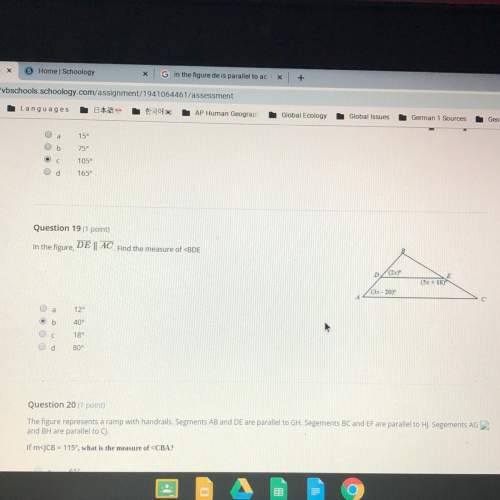
Mathematics, 06.05.2020 04:57 tierann46
A biologist is studying the growth of a particular species of algae. She writes the following equation to show the radius of the algae, f(d), in mm, after d days.
f(d)=11(1.01)^d
Part A: When the biologist concluded her study, the radius of the algae was approximately 11.79 mm. What is a reasonable domain to plot the growth function?
Part B: What does the y-intercept of the graph of the function f(d) represent?
Part C: What is the average rate of of the function f(d) from d=2 to d=7 and what does it represent?

Answers: 2


Other questions on the subject: Mathematics

Mathematics, 21.06.2019 17:20, psychocatgirl1
Which system of linear inequalities is represented by the graph? + l tv x-3y > 6 and y > 2x o x + 3y > 6 and y o x-3y > 6 and y> 2x o x + 3y > 6 and y > 2x + 4 la +
Answers: 1

Mathematics, 21.06.2019 20:00, anabelleacunamu
Find the value of x. round the length to the nearest tenth
Answers: 1


Mathematics, 21.06.2019 23:30, cornpops1749
Graph the line with the given slope m and y-intercept b. m=-3,b=1
Answers: 1
You know the right answer?
A biologist is studying the growth of a particular species of algae. She writes the following equati...
Questions in other subjects:


Mathematics, 16.09.2019 21:30

Social Studies, 16.09.2019 21:30

Mathematics, 16.09.2019 21:30

Spanish, 16.09.2019 21:30

Mathematics, 16.09.2019 21:30

Health, 16.09.2019 21:30

Mathematics, 16.09.2019 21:30

Spanish, 16.09.2019 21:30




